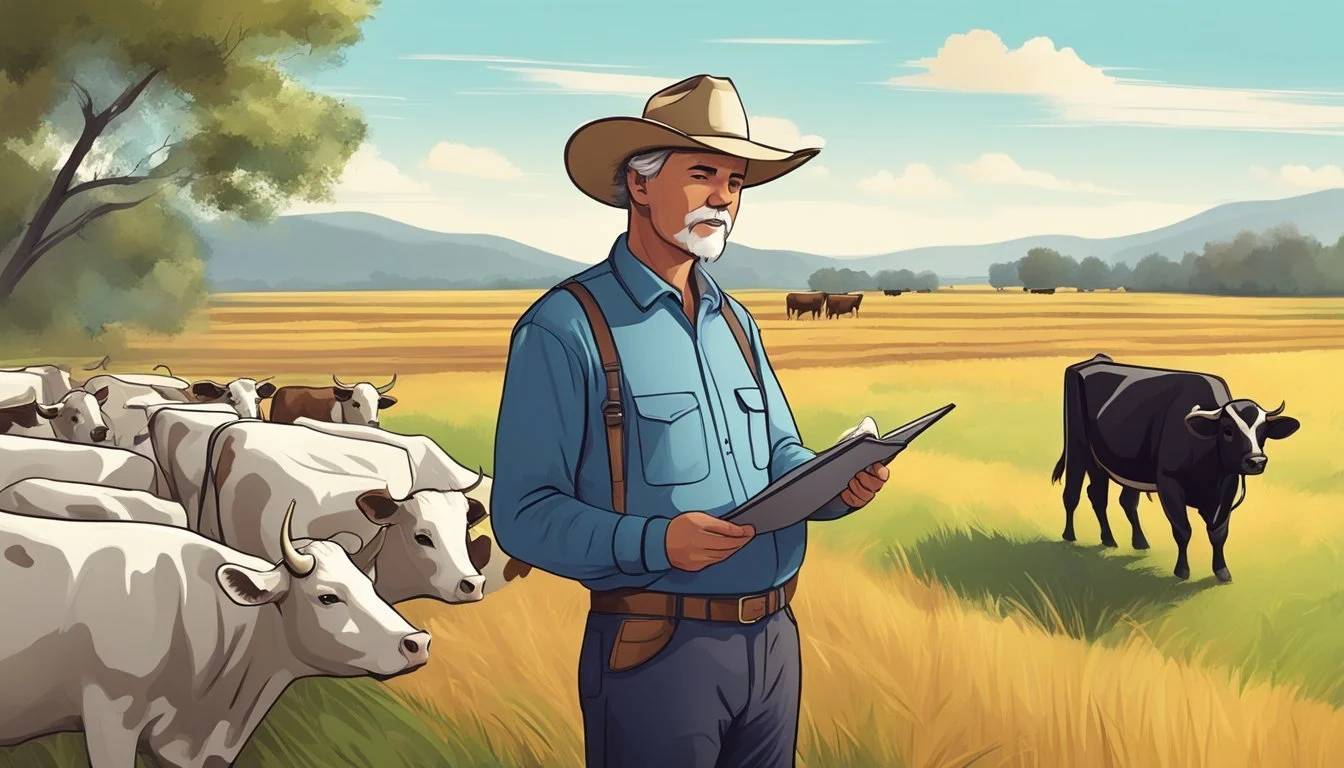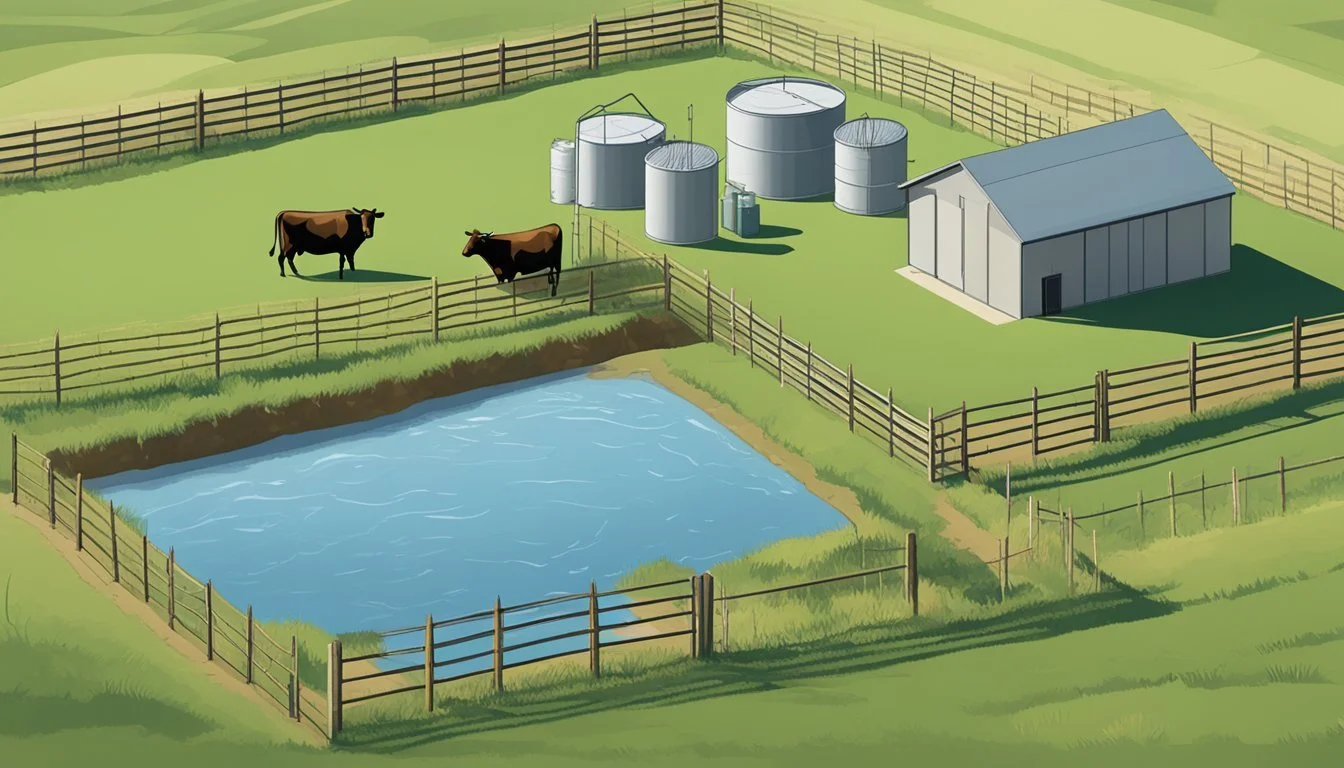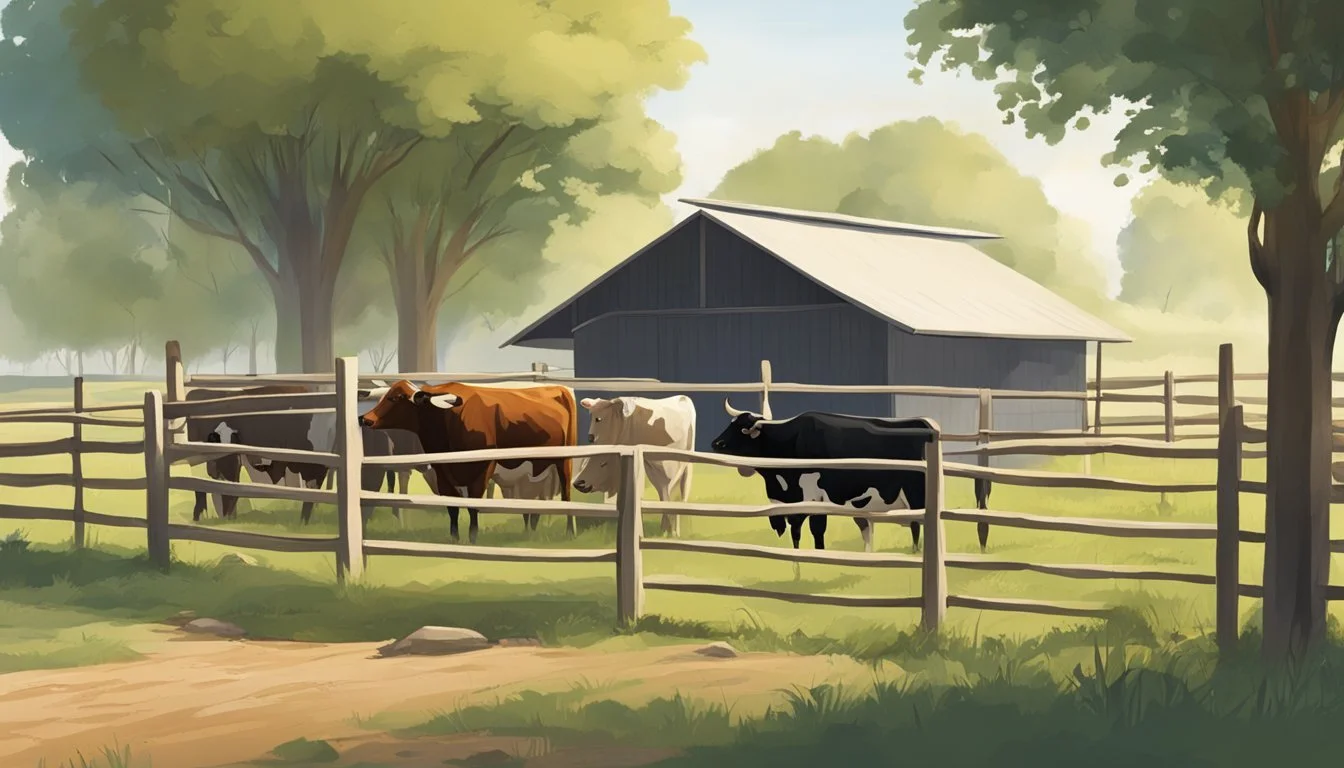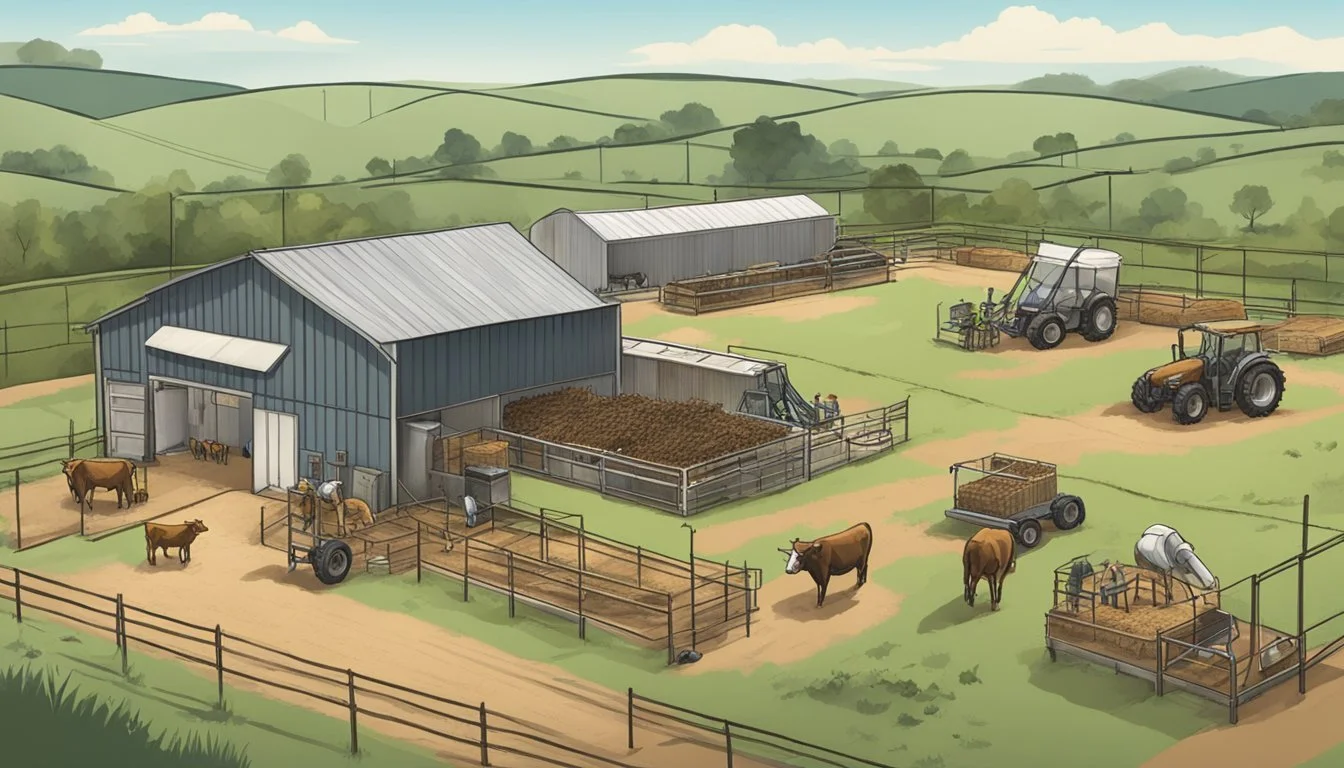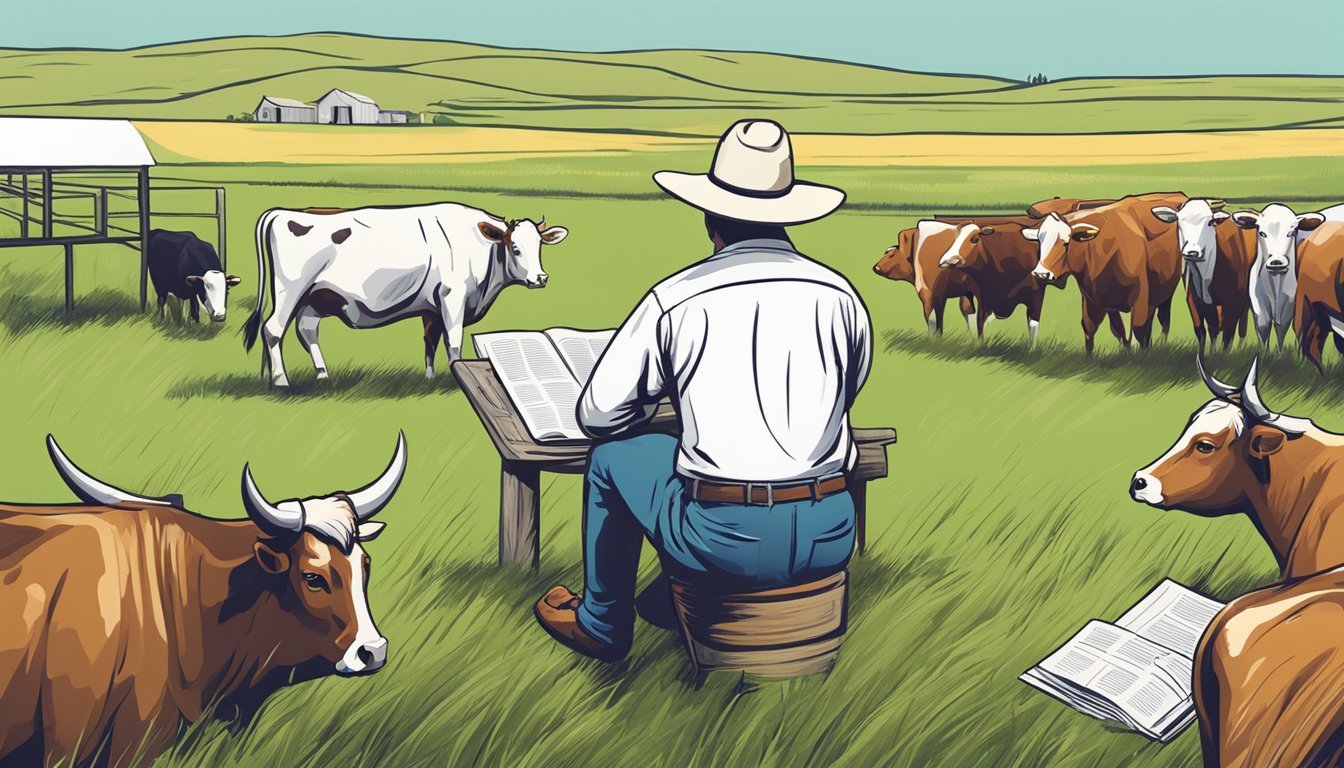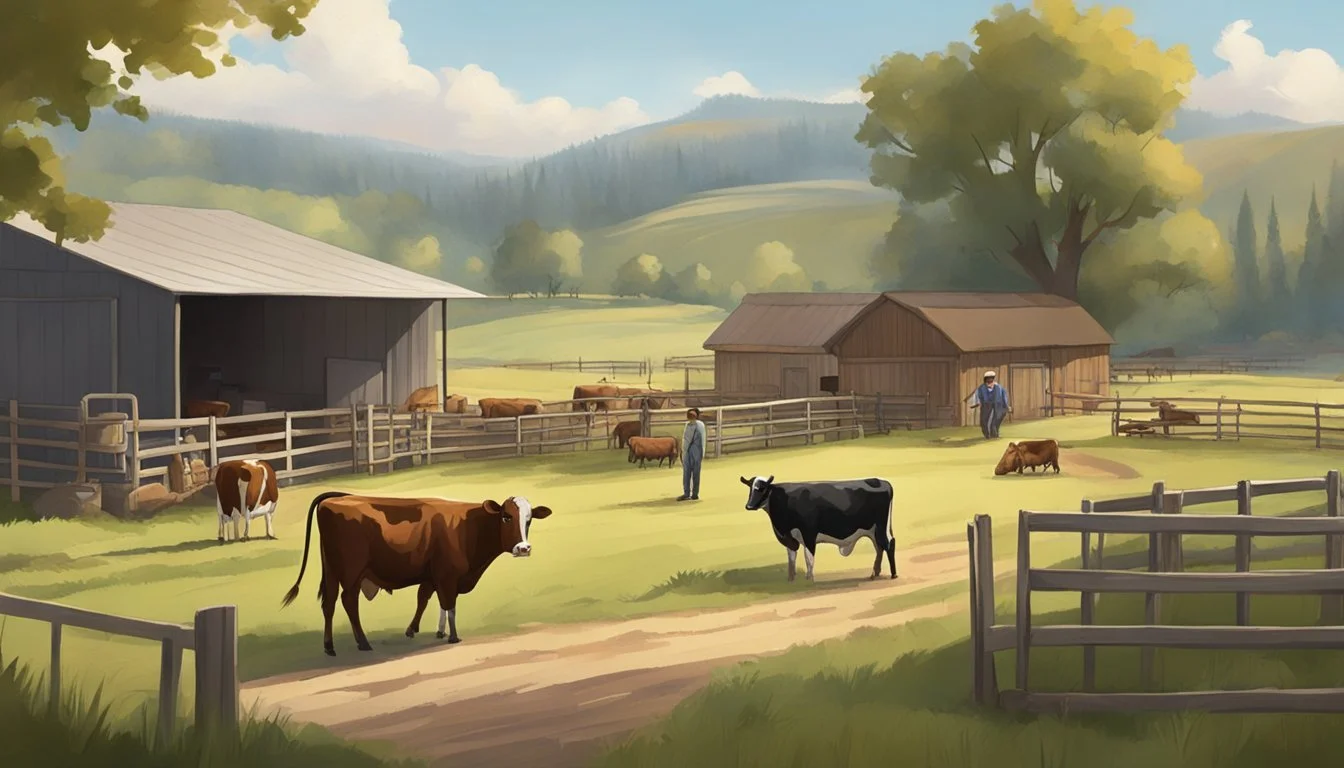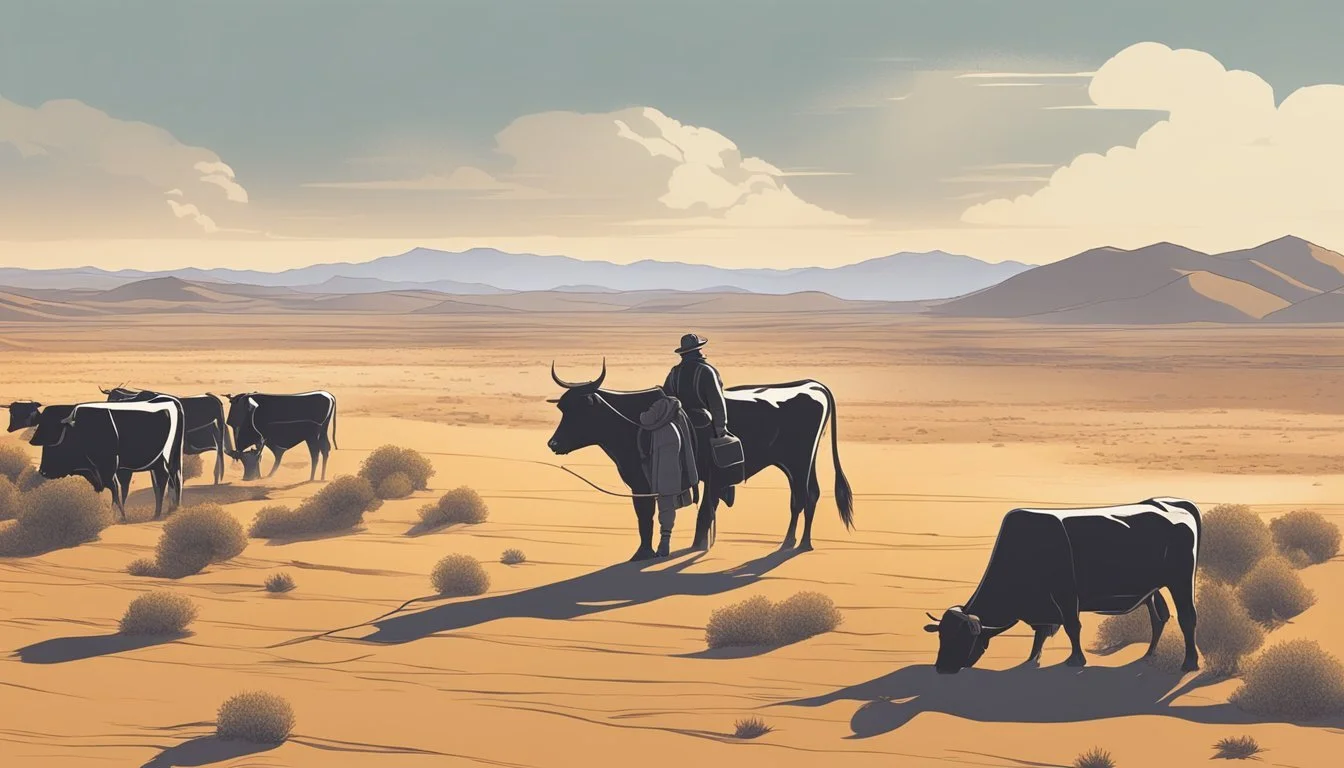How do I Manage a Cattle Operation with Limited Resources
Efficient Strategies for Small-Scale Ranchers
Managing a cattle operation with limited resources poses significant challenges, yet it is not an insurmountable task. It calls for strategic planning and execution to achieve both efficiency and sustainability. Cattle ranchers need to assess their available resources critically and make informed decisions on how best to utilize them. This involves a thorough understanding of the herd's nutritional needs, the carrying capacity of pastures, and efficient management practices to optimize output without overstretching limited assets.
An essential aspect of running a lean cattle operation is the adoption of best management practices that reduce waste and enhance productivity. Careful management of pastures with limited forages and the integration of a health program tailored to the herd's requirements are indispensable strategies. Moreover, implementing adaptive breeding practices and ensuring that herd genetics align with resource constraints can drive a successful operation.
Efficient use of feed, water, and land resources, alongside diligent herd health management, are pivotal elements. By focusing on maintaining animal health and optimizing feeding strategies, such as limit-feeding, a cattle operation can substantially reduce costs. For the cattle producer, staying educated and adaptable is vital, as outlined in resources like the Cow-Calf Management Guide. This approach lays a foundation for building a resilient and economically viable cattle business even when resources are scarce.
Analyzing Farm Resources
Efficient management of a cattle operation with limited resources requires a thorough analysis of existing assets and leveraging them for sustainable production. This process is crucial for optimizing the output while conserving the farm's ecosystem.
Resource Inventory and Management
A comprehensive Resource Inventory begins with cataloging all available assets on the farm. This includes livestock, equipment, labor, and particularly land. Effective management strategies must be tailored to utilize these resources without overburdening them. Accurate records of resources help in making informed decisions, such as the following:
Allocating finances for fencing or water systems.
Assessing the need for equipment repair or replacement.
Scheduling labor for efficient pasture management.
For example, mapping the farm's layout accurately can help in planning rotational grazing systems, which are critical to preventing overgrazing and encouraging pasture recovery.
Improving Forage Quality
Maximizing forage quality is essential for cattle health and productivity, especially when resources are scarce. Soil testing is an important step to understand the fertility needs of pastures and to apply the correct fertilizer. By improving pasture soil, one promotes the growth of high-quality grass, which can lead to:
Reduced feed costs by increasing the availability of nutrient-rich forage resources.
Enhanced animal health due to better nutrition from superior forage.
Practices such as overseeding legumes can increase forage quality and provide natural fertilization through nitrogen fixation, which is crucial in maintaining pasture vitality.
Utilizing Natural Grazing Areas
Maximizing the use of natural grazing areas directly correlates with the success of a cattle operation. Assessment and management of these areas include:
Identifying and protecting sensitive ecosystems that are not suited for grazing.
Planning grazing to coincide with periods when forage resources are at their peak, which reduces the need for supplemental feeding.
Implementing controlled grazing through robust pasture management to maintain grasses at optimal growth stages.
Careful utilization of natural grazing areas can reduce feed costs and limit the environmental impact of the cattle operation.
Cattle Nutrition Strategies
Managing cattle nutrition with limited resources necessitates a strategic approach that maximizes the utility of available feedstuffs while ensuring the cattle meet their nutritional requirements. Prioritizing feed quality and supplementation can lead to more efficient cattle growth and production.
Adapting Feed to Available Resources
Adapting cattle feeding strategies to the resources at hand is a critical element of managing a cattle operation efficiently. Producers can utilize a variety of feed resources depending on their cost and availability. This may include local crop residues, forages, or high-protein byproduct feeds, which can be a cost-effective alternative to traditional feedstuffs. Understanding the nutritive value of these feed components is essential to ensure they meet the herds’ dietary needs without compromising health or productivity.
Nutritional Requirements and Supplementation
Cattle require a diet balanced in energy, protein, vitamins, and minerals to maintain body condition and support productive functions such as growth, lactation, and reproduction. In cases where natural feedstuffs are deficient, mineral supplementation might be necessary. Strategic use of protein supplements can support cattle during periods when forage quality is poor, especially for young, growing cattle or lactating cows. It's important to adjust supplementary feeding based on forage availability and cattle condition to avoid over-feeding and wastage of resources.
Forage Testing and Feed Analysis
Regular forage testing is an invaluable tool for cattle operators, especially when resources are limited. It provides precise information about the nutrient content of the forage available, which then can inform decisions on supplemental feeding. Feed analysis allows a producer to match the nutrient profile of available feedstuffs to the cattle's requirements, ensuring a balanced diet without purchasing unnecessary or excessive feed. This practice helps in optimizing the feed program and can prevent nutritional deficiencies or toxicities, contributing to the overall health and performance of the cattle.
Breeding and Reproduction
Effective management of breeding and reproduction is crucial in a cattle operation, especially with limited resources. Focused strategies in designing breeding programs, managing the calving season, and developing heifers are necessary to ensure efficiency and sustainability.
Breeding Program Design
Designing a breeding program that maximizes genetic potential while considering resource limitations is essential. A breeding soundness exam is critical to evaluate bulls, ensuring they are capable of successful fertilization. Farmers with limited resources might consider artificial insemination (AI) as it allows for the use of superior genetics without the expense of maintaining a bull. Selecting for traits that enhance fertility and adaptability to local environmental conditions will aid in a prosperous cattle operation.
Managing Calving Season
Calving season management involves strategic planning to ensure optimal outcomes for both cows and calves. Operations with fewer resources should aim for a tight calving window, which can be achieved through synchronized breeding. This reduces labor needs and allows for more efficient use of facilities. Close monitoring during the calving season is vital, as swift intervention in cases of dystocia can save both cow and calf, preserving your investment.
Heifer Development and Fertility
Fertility is the cornerstone of a productive cattle operation. Heifers should reach an appropriate weight and body condition score before breeding, with first-calf heifers being given special attention due to their additional growth needs. Monitoring bred heifers closely for signs of calving and providing them with adequate nutrition can enhance both fertility and calf survivability. Remember, heifer development extends beyond the first breeding and influences overall reproductive longevity within the herd.
Herd Health and Welfare
Managing herd health and welfare with limited resources calls for strategic implementation of preventative measures, regular monitoring, and the collaboration with veterinarians. Operators must emphasize disease prevention and parasite control, along with assessing the physical condition of animals to ensure their overall well-being.
Preventative Health Practices
Preventative health care is crucial for maintaining the health of cattle and minimizing costs. Vaccinations are a cornerstone of preventive care, as they protect cattle from common and costly diseases. Collaborating with a veterinarian helps determine an effective vaccination schedule tailored to the specific needs of the herd, including risks posed by regional diseases. Aside from vaccinations, simple husbandry practices like maintaining clean water sources and providing adequate nutrition can drastically improve animal health.
Parasite Control Methods
Effective parasite control methods are imperative for both the health and productivity of a cattle operation. Integrated parasite management involves regular fecal testing and the strategic use of anti-parasitic medications, guided by the advice of veterinarians. Rotational grazing and avoiding overstocking pastures can help reduce the parasite load in the environment, thereby supporting the well-being of the herd.
Body Condition Scoring and Welfare
Body condition scoring (BCS) is a non-invasive, cost-effective way to assess the nutritional status and overall well-being of cattle. Operators should regularly score their cattle to ensure they meet ideal condition standards for optimal health and reproductive performance. A BCS system typically ranges from 1 (emaciated) to 9 (obese), with a score of 5 being ideal. Keeping cattle in an optimal body condition is an important aspect of welfare, reducing the risk of disease and improving lifespan and productivity.
By adhering to these practices, cattle operations can optimize herd health and welfare, even with finite resources at their disposal.
Managing Limited Water and Feed Resources
In the face of drought and limited feed resources, cattle operation managers must prioritize efficient water use and strategic feed rationing. These practices ensure nutritional needs are met while conserving scarce resources.
Ration Formulation During Drought
During droughts, managers should assess cattle nutritional requirements and formulate rations that are high in energy and crude protein, yet economical. Limited feed resources necessitate the use of nutrient-dense feed resources, such as silage, to stretch availability. Understanding the balance of macronutrients is vital, and protein levels should be maintained to support health and productivity, with a focus on supplementation when necessary.
Alternative Feeds and Byproducts
To mitigate the pressure on conventional feed resources during drought, alternative feeds and agricultural byproducts can be utilized. Byproducts such as distillers grain provide a cost-effective source of protein and energy and can be incorporated into cattle diets. Managers should also explore the use of crop residues, an often-underutilized feedstuff that can supplement limited forages and provide additional roughage in rations.
Cattle Management Techniques
Successful cattle management hinges on making informed decisions to maximize efficiency, especially when resources are limited. Balancing culling strategies, optimizing herd size, and employing intensive grazing management are pivotal to running a well-organized cattle operation.
Effective Culling Decisions
Culling decisions are a core aspect of cattle management. It's key to identify underperforming or unhealthy animals that may lower the overall productivity of the cow herd. Parameters such as age, health, reproductive status, and contribution to herd genetics should guide which cull cows are removed from the herd. This approach can help maintain a productive cattle operation with limited resources.
Optimizing Herd Size and Composition
To manage a cattle operation effectively, one must adjust the herd size to fit the available resources, and ensure an optimal composition of the herd. Balancing the number of breeders, growers, and finishing cattle can contribute to better cattle production effectiveness. Regularly assessing resource availability and the herd's performance helps ranchers maintain an ideal herd size that their environment can support.
Intensive Grazing Management
Intensive grazing management is a technique that involves rotating cattle through pasture segments to allow forage regrowth in resting segments. This method not only optimizes pasture usage but also helps maintain soil health and preserve the ecosystem. For producers operating on limited resources, intensive grazing can maximize the use of available land and reduce feed costs. Implementing a rotation schedule is essential in this process to afford each area adequate recovery time.
Infrastructure and Equipment
Managing a cattle operation, particularly on small farms with limited resources, requires smart investments in infrastructure and equipment that prioritize functionality and cost-effectiveness. Essential considerations include durable shelter and secure fencing, alongside selecting versatile equipment poised to deliver on the farm's needs without overspending.
Cost-Effective Facility Investments
For small-scale cattle operations, investments in facilities should be made with a focus on multipurpose use and longevity. Shelters need not be elaborate but must provide adequate protection from weather extremes. Strategic investments might include a simple three-sided shed or modular designs that can be expanded as the operation grows. Fencing is another critical infrastructure component, where opting for high-tensile wire provides durability and cost savings long term.
Equipment Essentials for Small Operations
Small farms must identify equipment that serves multiple purposes, reducing the need for numerous single-use tools. A basic tractor can be versatile with attachments for feeding, mowing, and other tasks. Cattle operations should invest in a reliable livestock trailer, necessary for transportation to markets or veterinary clinics. Handling facilities, although a significant initial investment, can be scaled to size and designed for safety and efficiency. Essential tools like water troughs and feed bins should be durable and easy to clean.
Equipment: Tractor with attachments
Use Case: Feeding, mowing, moving hay
Equipment: Livestock trailer
Use Case: Transportation to markets/clinics
Equipment: Scaled handling facilities
Use Case: Safe processing and vet care
Equipment: Water troughs and feed bins
Use Case: Daily feeding and hydration
Sustainable Beef Production
In the pursuit of sustainability, beef production operations with limited resources must focus on eco-friendly cattle raising practices and grazing impact, establishing balance to maintain ranch profitability while conserving the land.
Eco-Friendly Cattle Raising Practices
Organic methods and grass-fed systems play a crucial role in sustainable beef production. These practices not only reduce environmental impact but also cater to consumer demand for natural beef options. For instance, a report by the World Resources Institute outlines the importance of improving efficiency in land use and feed, which can significantly mitigate the carbon footprint of cattle operations. Moreover, utilizing rotational grazing and maintaining herd health leads to better productivity and, in turn, heightened profitability.
Grazing Impact and Land Conservation
The way cattle graze can significantly affect the land. Optimizing grazing management is pivotal for soil health, biodiversity, and ecosystem resilience. Research indicates that sustainable pastures can be realized through management strategies that are sensitive to environmental, economic, and stewardship considerations, as mentioned in a resource from Texas A&M AgriLife Extension. Strategies such as adjusting stocking rates to avoid overgrazing, and implementing conservation easements, can preserve the land's natural state and contribute to the long-term viability of the ranch.
Through the incorporation of these eco-friendly practices and a commitment to land conservation, cattle operations can achieve sustainability in beef production while also safeguarding their economic future.
Financial Planning and Market Analysis
In managing a cattle operation, especially with limited resources, precise financial planning and a thorough market analysis are indispensable. These components enable small-scale operators to maximize productivity and efficiency in their cow-calf operations, orienting them towards more sustainable and profitable production.
Budgeting for Small-Scale Operators
For cattle producers operating on a smaller scale, budgeting is a critical step that requires careful attention to detail. Producers should concentrate on:
Fixed Costs: These include land mortgages, insurance, and property taxes.
Variable Costs: These are costs tied directly to cattle production, such as feed, veterinary expenses, and labor.
Creating a detailed budget helps in tracking expenditures and revenue, consequently identifying areas for cost-saving and boosting overall efficiency. Cattle feeder enterprises must closely manage these costs to maintain the necessary working capital for their operations, as detailed in the guide on Cow-Calf Management.
Marketing Strategies and Value-Added Products
Effective marketing strategies can significantly influence the revenue of cow-calf producers. Identifying the right markets and positioning their product can lead to higher profitability. Key strategies include:
Direct Marketing: Selling beef directly to consumers, restaurants, or at farmers' markets.
Niche Marketing: Targeting specific consumer groups interested in organic, grass-fed, or locally raised beef.
In addition, cattle operations should explore opportunities to create value-added products which can raise profitability. For example, producing specialty beef cuts or offering agritourism experiences are ways to diversify income streams. This is particularly useful in times when beef prices are stable, but feed prices are high, which has been a recent scenario as discussed in an analysis on Farm Progress.
Extension and Educational Resources
When managing a cattle operation with limited resources, leveraging the expertise of extension specialists and employing science-based guidelines are crucial steps. These resources provide a sustainable approach to running a cattle enterprise, ensuring effective management within the constraints of available resources.
Working with Extension Specialists
Extension specialists are key allies in the operation of a cattle farm, especially when resources are scarce. They bring a wealth of knowledge tailored to the specific region and challenges of the enterprise. For instance, specialists from OSU Extension Service offer a comprehensive Beef Cow-Calf Management Guide which is an invaluable resource for both experienced and novice beef cattle producers. These professionals offer advice on everything from animal health to pasture management, helping producers maximize the potential of their limited resources.
Utilizing Science-Based Guidelines
To ensure the economic sustainability of cattle operations, it’s imperative that farms utilize science-based guidelines. This involves adopting proven strategies and techniques that lead to successful outcomes. Resources like Penn State Extension's Beef Cattle Production and Management provide educational materials that cover a broad range of topics from nutrition to reproductive technology, all of which are critical components of a well-managed cattle enterprise. These guidelines assist in making informed decisions that optimize production, even in cases of limited resources.
Legal and Ethical Responsibilities
Managing a cattle operation with limited resources necessitates a thorough understanding of legal mandates and ethical standards to ensure compliance and promote humane treatment.
Understanding Industry Regulations
Cattle producers are required to adhere to regulatory standards that vary by region and nation. In the United States, the Environmental Protection Agency (EPA) enforces regulations affecting cattle operations, particularly concerning waste management to protect water quality. At the national level, guidelines such as the Animal Disease Traceability program implemented by the USDA are mandatory to facilitate the tracking of livestock diseases. Climate considerations are integral to these regulations, as certain practices must be adjusted to minimize environmental impact and ensure the adaptation of livestock to local climates.
Animal Welfare and Ethical Considerations
Ethical considerations are paramount. It is the duty of the farmer to ensure the well-being of their cattle by providing adequate food, water, and medical care. Guidelines such as those established by the Beef Quality Assurance program outline the best practices for care and handling to ensure animals are treated humanely. Additionally, considering climate factors, shelter, and space appropriate for the specific region supports the cattle’s ability to thrive in varying environmental conditions. Such ethical practices not only contribute to the overall health of the herd but also reflect positively on the operation’s reputation and consumer trust.
Future Outlook
In navigating the future of cattle operations, ranchers must consider the evolving climate and innovative agricultural technologies. These factors are instrumental in managing a profitable and sustainable cattle production system with limited resources.
Adapting to Climate Change
Climate change significantly impacts cattle operations. It affects the availability of water and forage, transforming how ranchers approach cattle production. Strategies, such as improved pasture management and water conservation practices, will be central to adapting livestock operations. Ranchers also need to consider selective breeding for climate resilience, ensuring their cattle have genetics that allow them to thrive in more extreme conditions. For instance, breeds with a proven resilience to heat and drought can maintain growth rates and sustainability even in challenging environments.
Innovation in Cattle Farming
The adoption of technological advancements supports ranch profitability in a landscape of limited resources. Technologies like precision agriculture can optimize feed usage, enhance breeding programs, and monitor animal health more efficiently. Sensor technology and data analytics play a substantial role in tracking cattle growth rates and monitoring pasture conditions, allowing for proactive management strategies. A shift towards automation can alleviate labor costs and shortages, contributing to overall ranch profitability.
Utilizing these innovations ensures that cattle operations not only survive but thrive in the face of limited resources and a changing climate.
Conclusion
Managing a cattle operation effectively with limited resources demands strategic planning and a focus on efficiency and sustainability. They should prioritize practices that optimize resource use without compromising animal health or productivity. This includes body condition scoring to monitor cattle wellness, as mentioned in the University of Wyoming's guide.
Key considerations include:
Resource Assessment: They must take stock of available land, feed, and equipment, ensuring that they meet the operation's needs as indicated by Iowa State University Extension.
Herd Health: Implementing a tailored vaccination program and regular health checks as suggested by the Best Management Practices for Small Beef Cow-Calf Herds guide is crucial.
Marketing Strategies: They must develop effective sales and marketing tactics to ensure the business's financial viability.
It is essential that they leverage local resources like cooperative extensions for customized advice, outlined in the Cow-Calf Management Guide.
Lastly, they should continuously seek knowledge on beef cattle production and management from reliable sources such as Penn State Extension, to adapt to industry changes and incorporate best practices into their operation.


